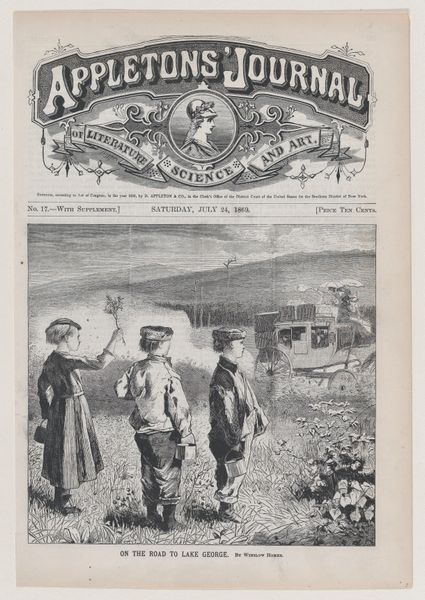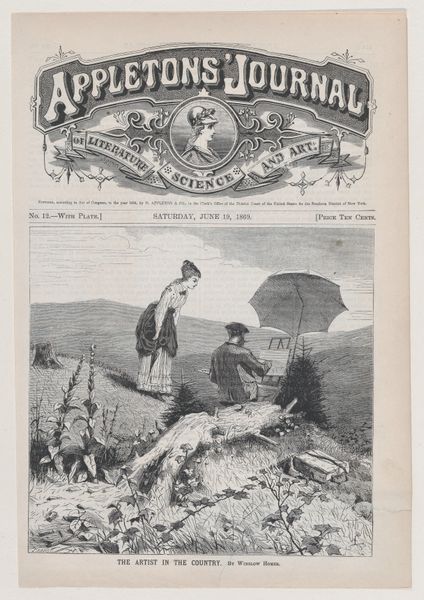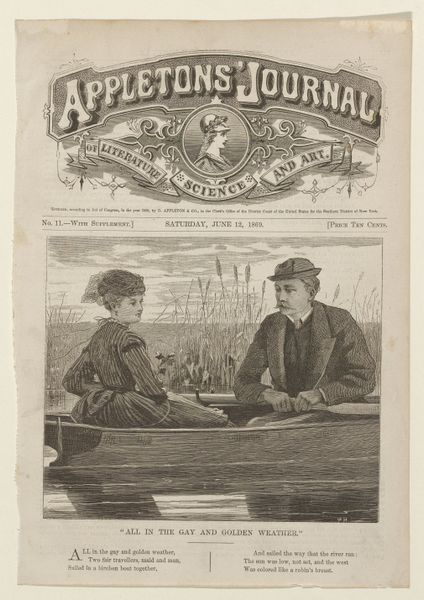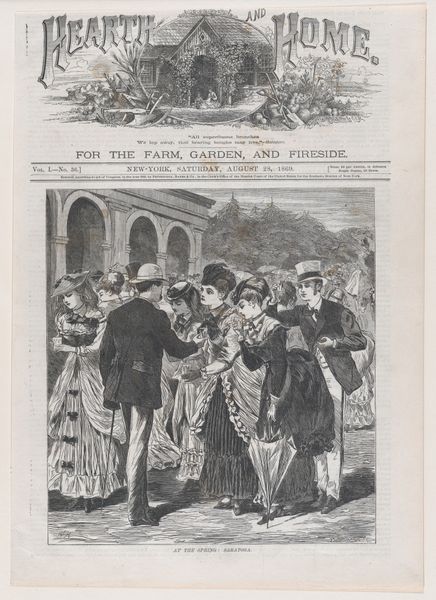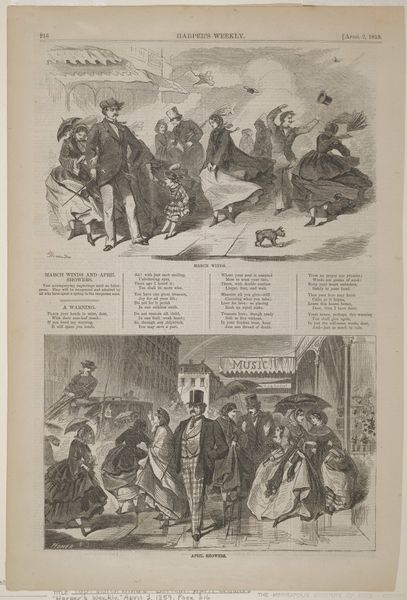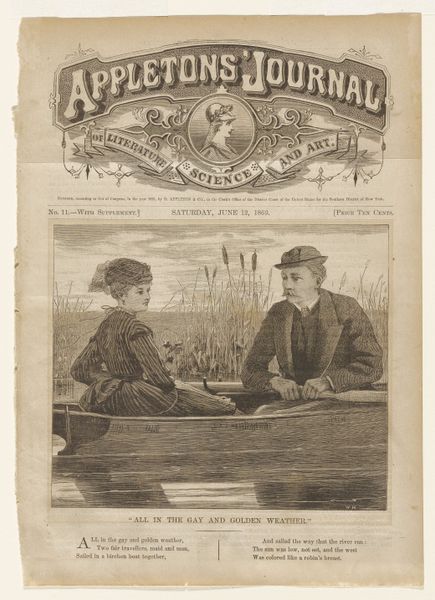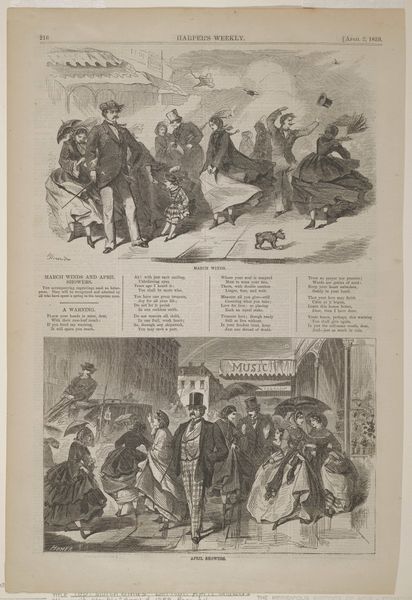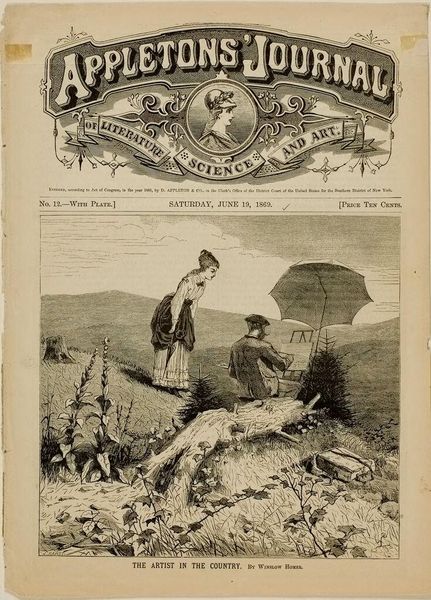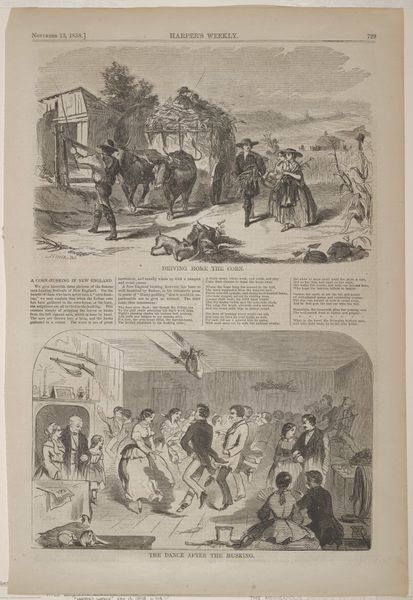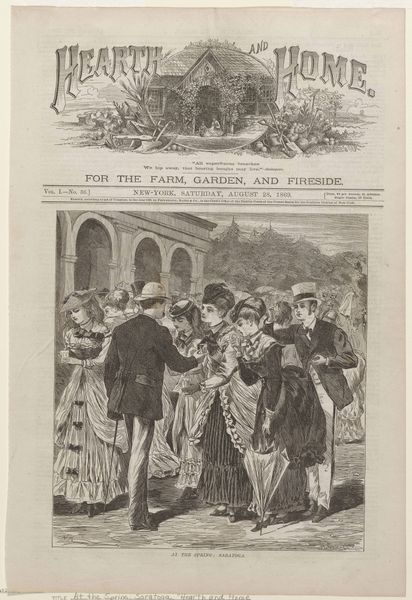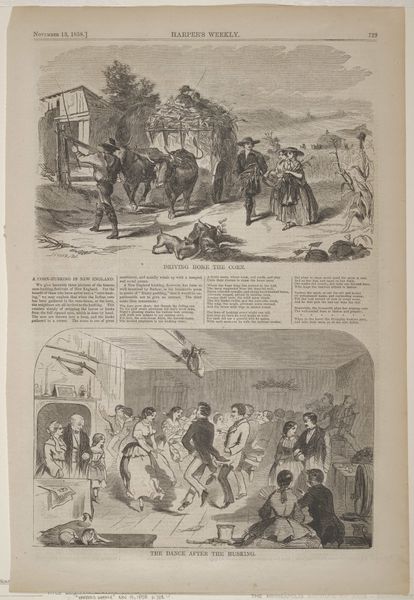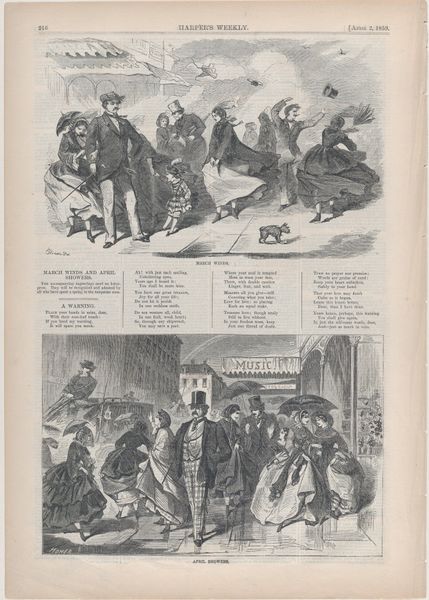
Dimensions: 6 3/16 x 6 5/8 in. (15.72 x 16.83 cm) (image)11 x 7 3/4 in. (27.94 x 19.69 cm) (sheet)
Copyright: Public Domain
Editor: This is Winslow Homer's "On the Road to Lake George," a wood engraving from 1869 that appeared in Appleton's Journal. I’m struck by the contrast between the finely detailed foreground and the blurry background. What are your thoughts on this piece? Curator: Well, considering this appeared in a widely circulated journal, it’s less about personal expression and more about shaping public perception. These images, mass-produced through wood engraving, played a crucial role in constructing an idea of American identity, particularly after the Civil War. Notice the three children, seemingly archetypal figures of innocence, observing the passing carriage. What could that represent to you? Editor: Perhaps a class division? Or maybe the change in travel with the development of more accessible forms like rail, that maybe this carriage is passing. It feels like those figures are looking towards something modern or at least, representative of progress. Curator: Precisely! Homer here isn’t just depicting a pleasant scene; he’s subtly commenting on the evolving social landscape. Consider also the positioning of the journal's title – "Literature, Science and Art." The artwork is framed, legitimized by, these concepts, inviting the reader to consider a new understanding about post-war United States. How does that new understanding of American influence your reception of this piece? Editor: That contextual element brings out an interesting narrative of idealized Americana which I probably would've missed by just judging based on aesthetic merit. I now appreciate the social commentary Homer has presented. Curator: Exactly! By examining these works through a historical lens, we see the cultural and social forces shaping the art. And it reshapes how we understand our world today.
Comments
No comments
Be the first to comment and join the conversation on the ultimate creative platform.

